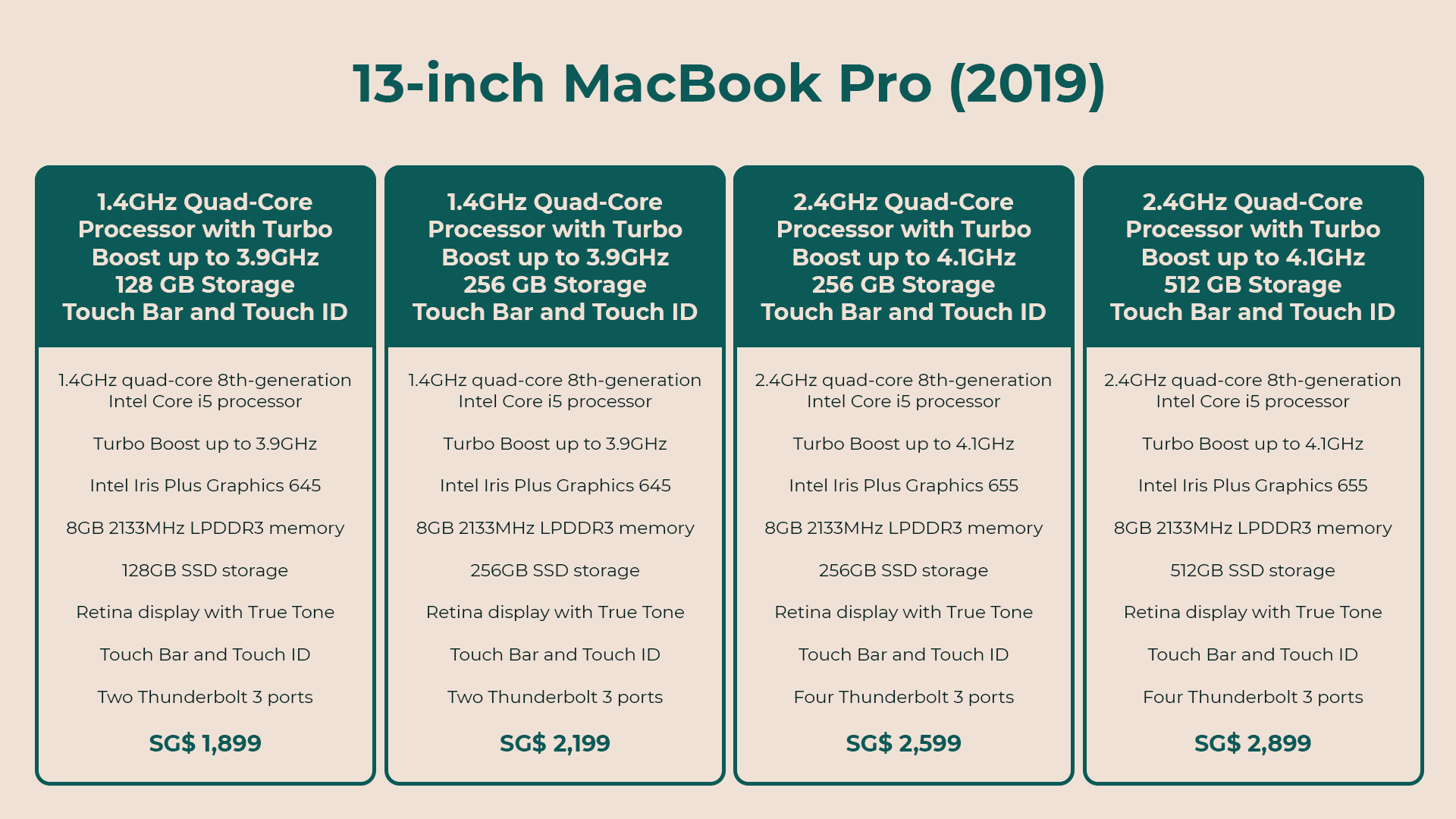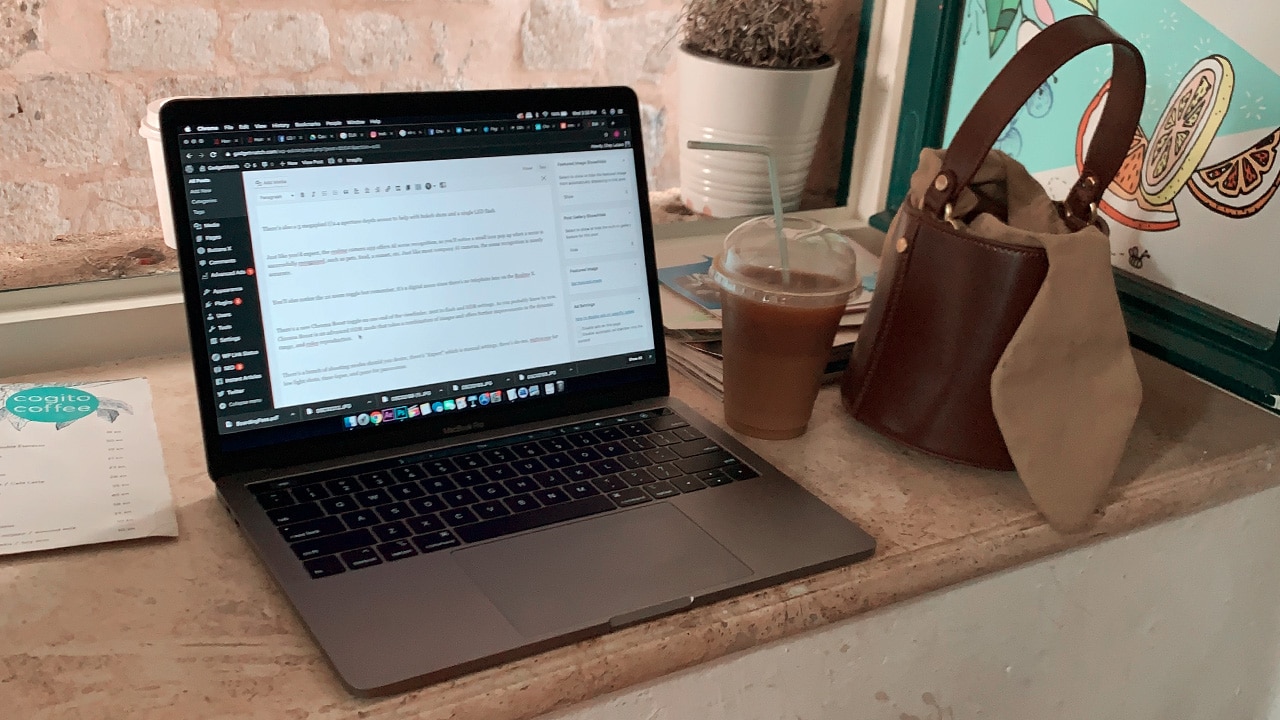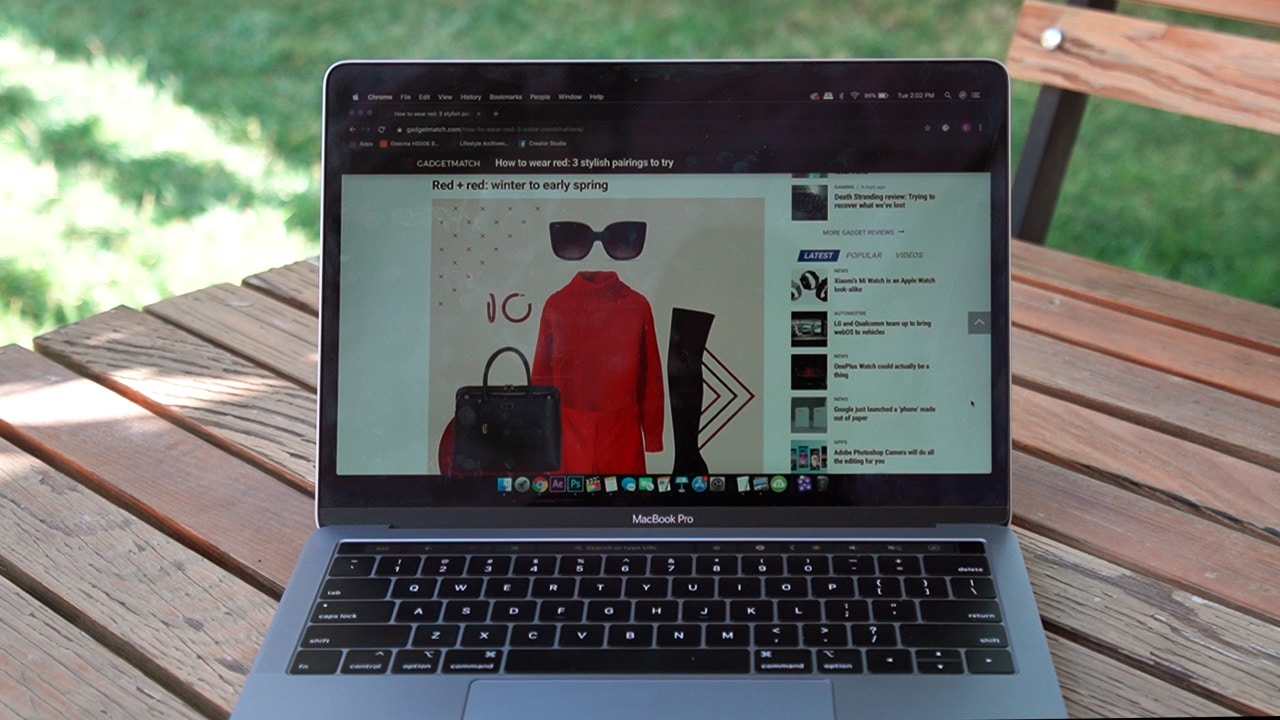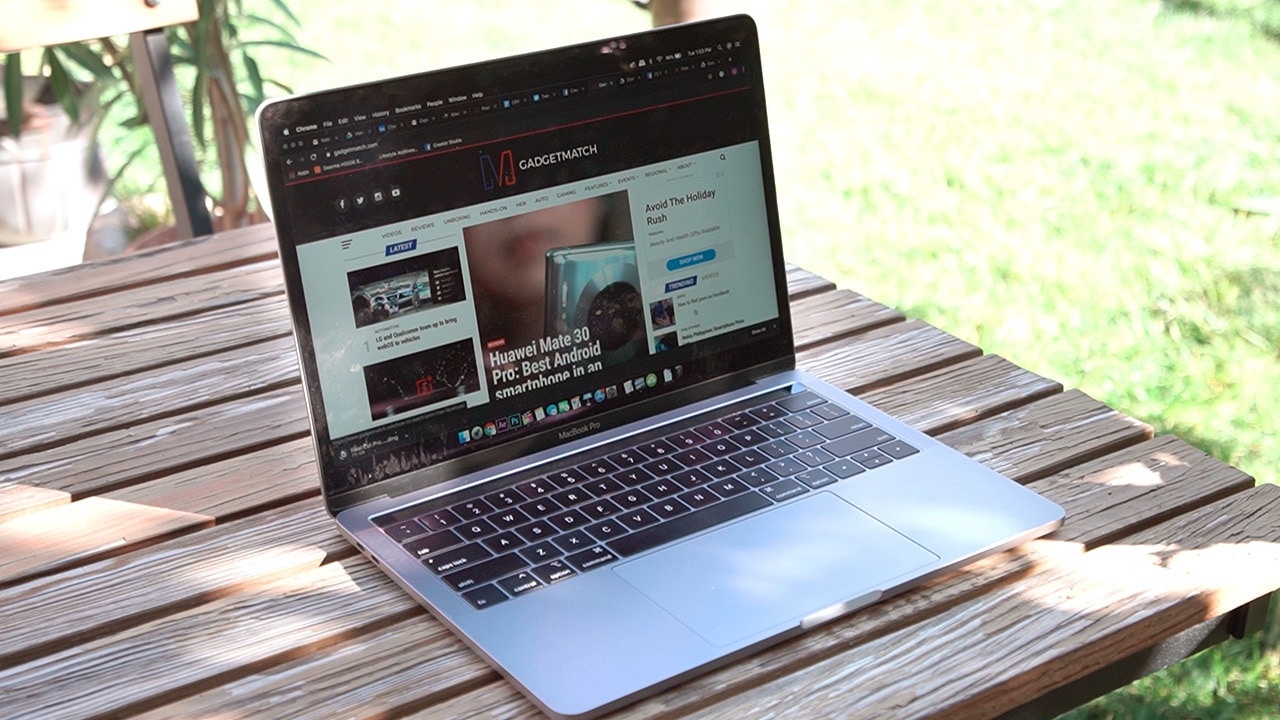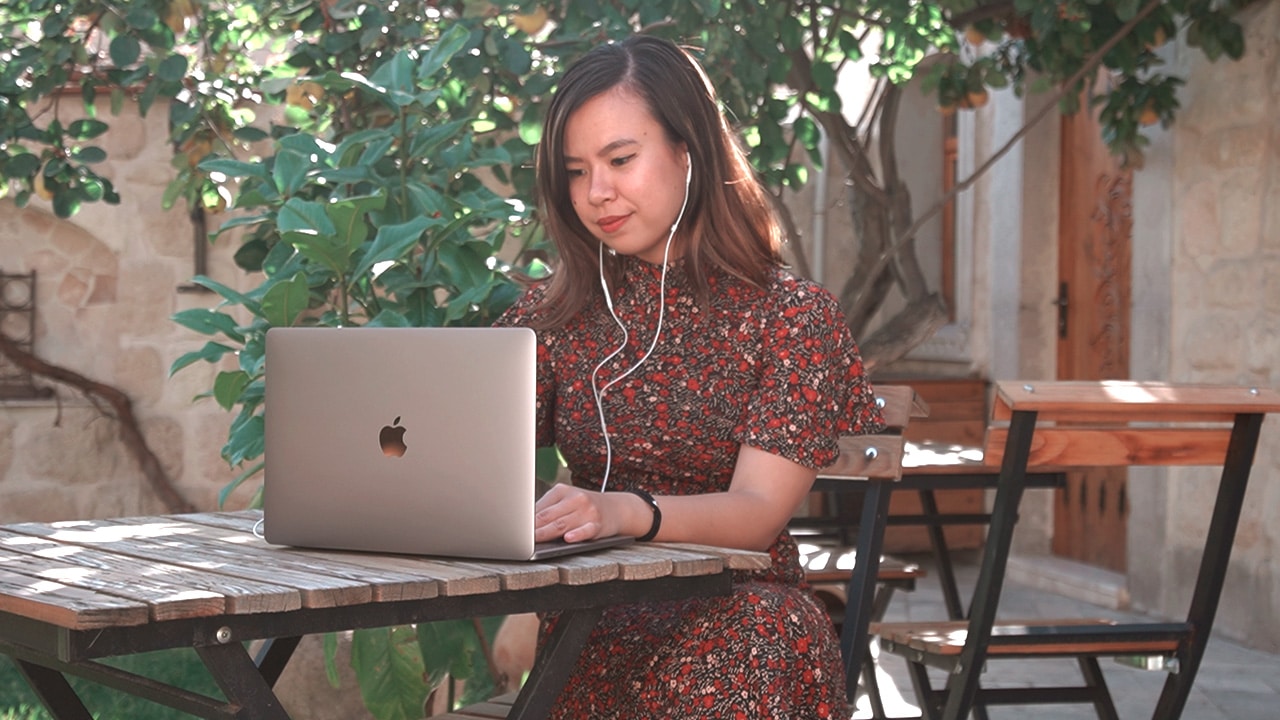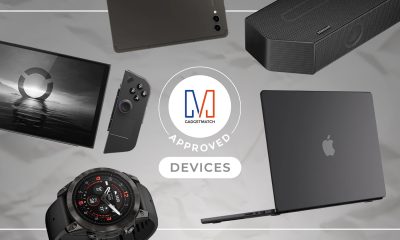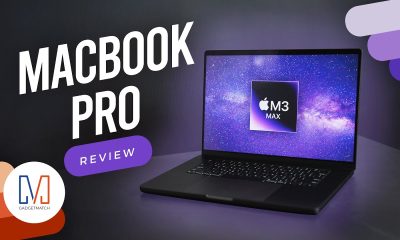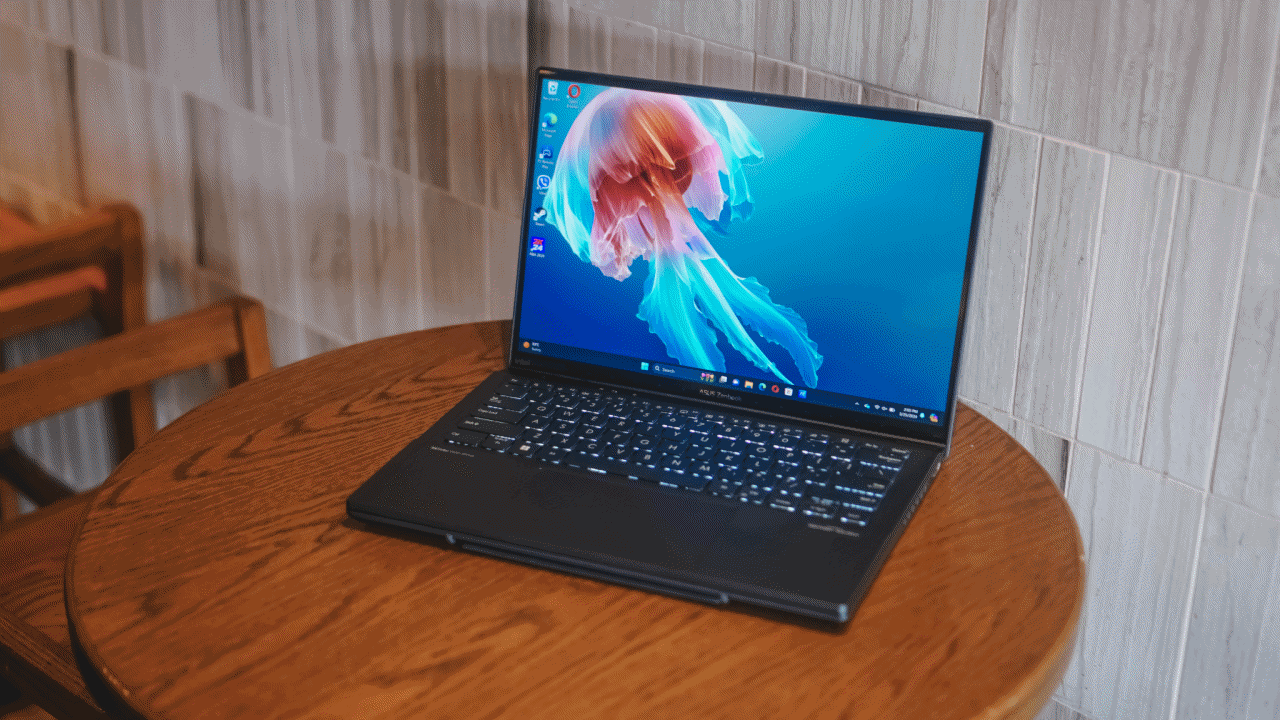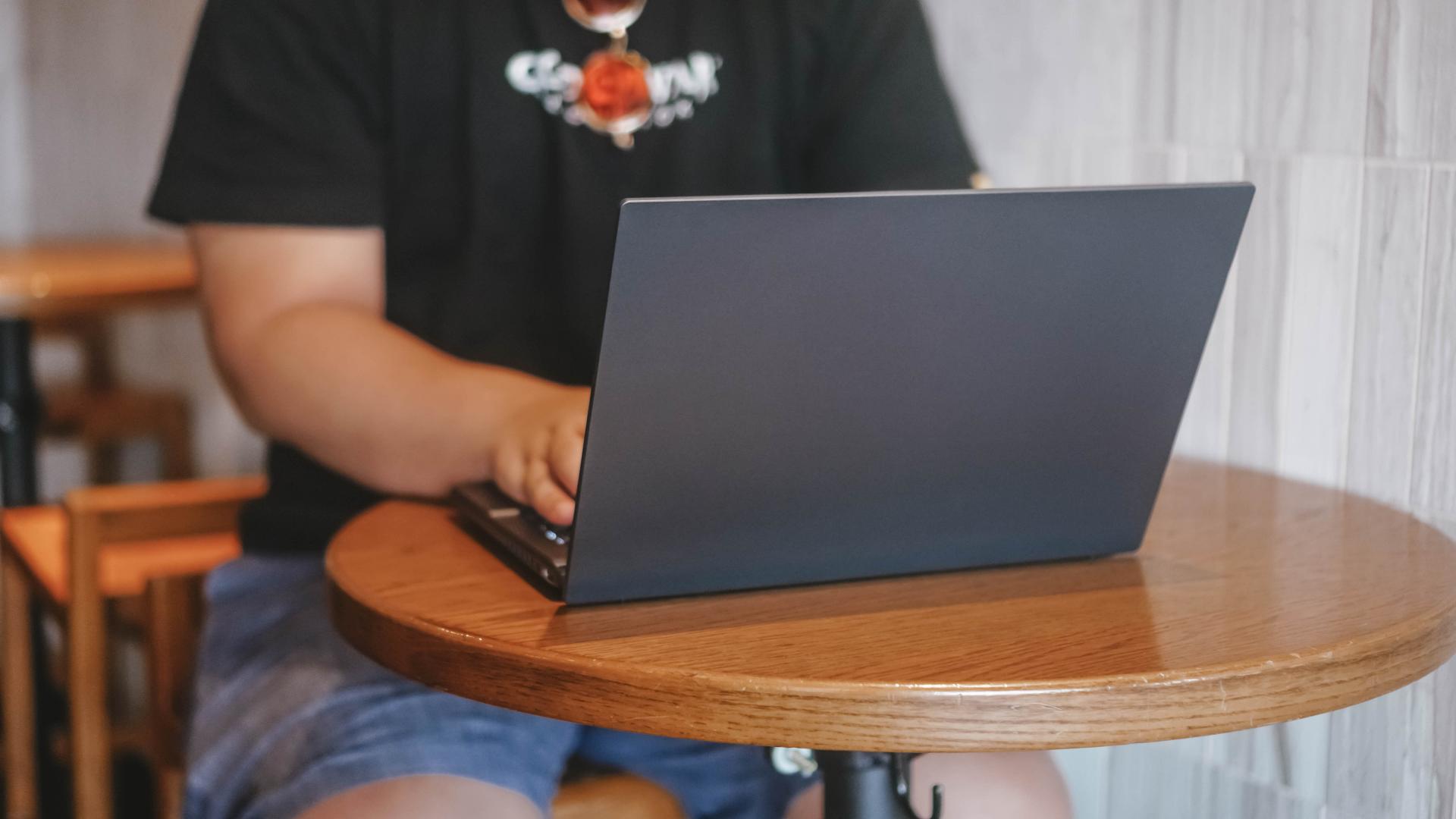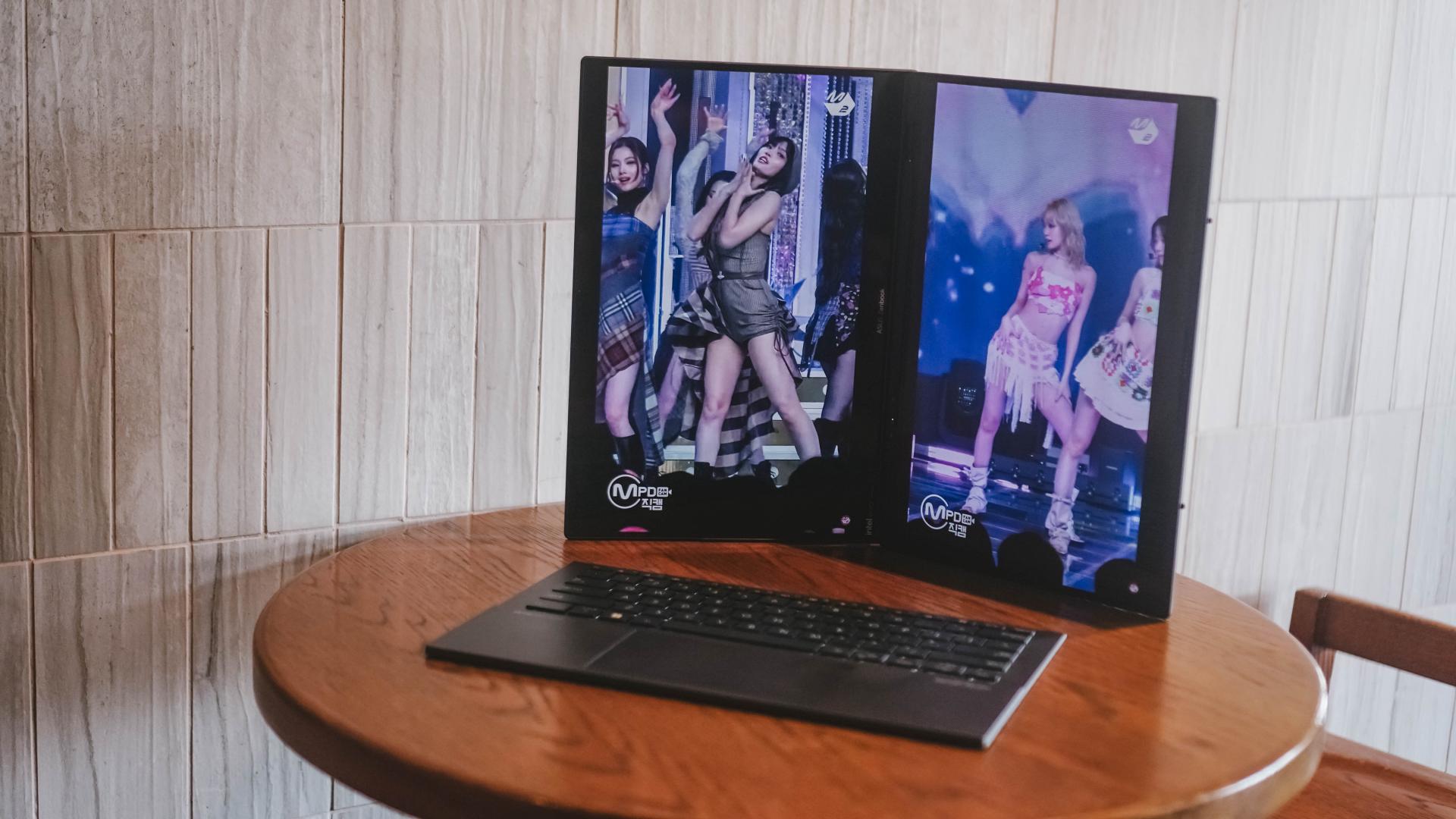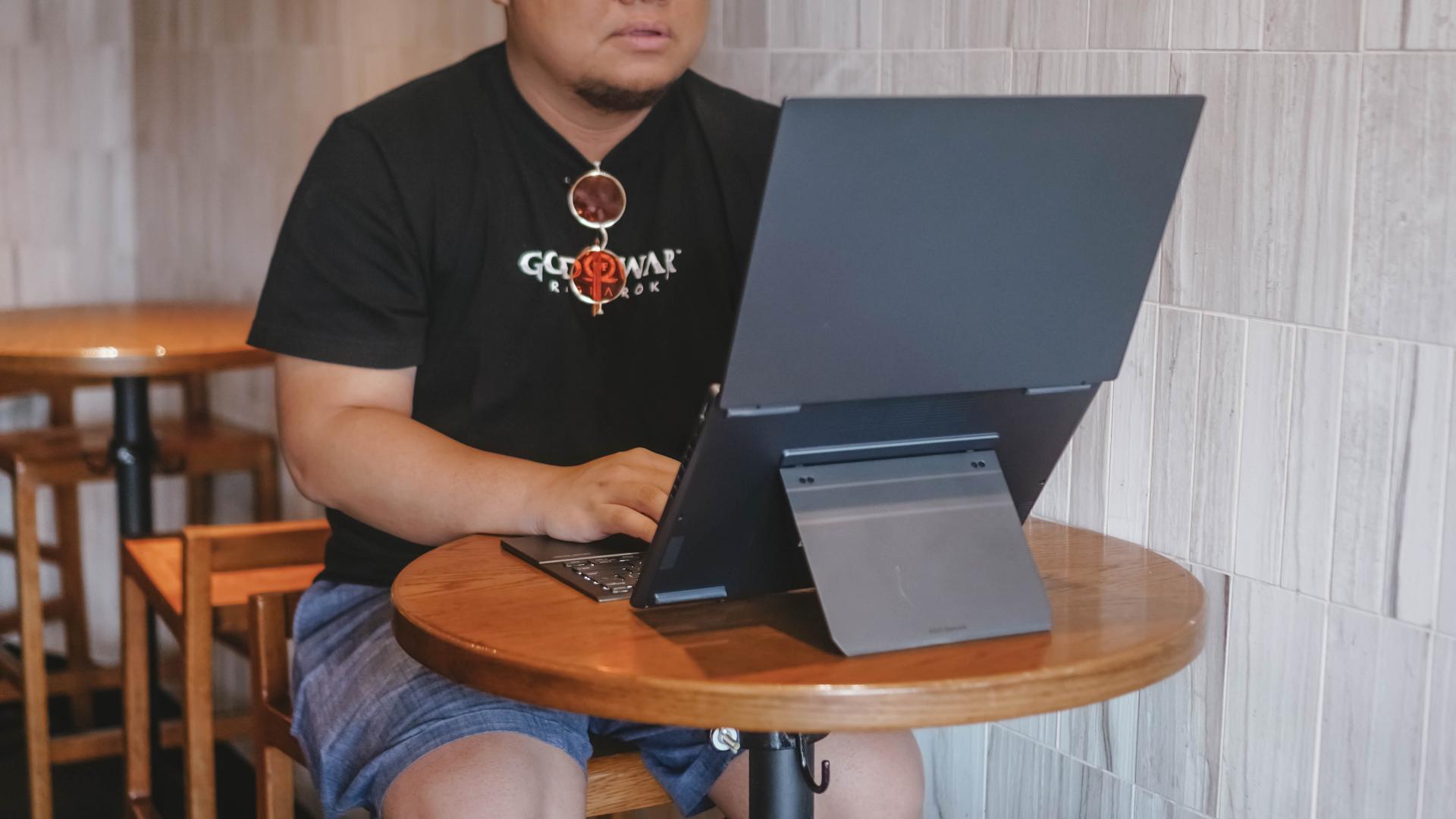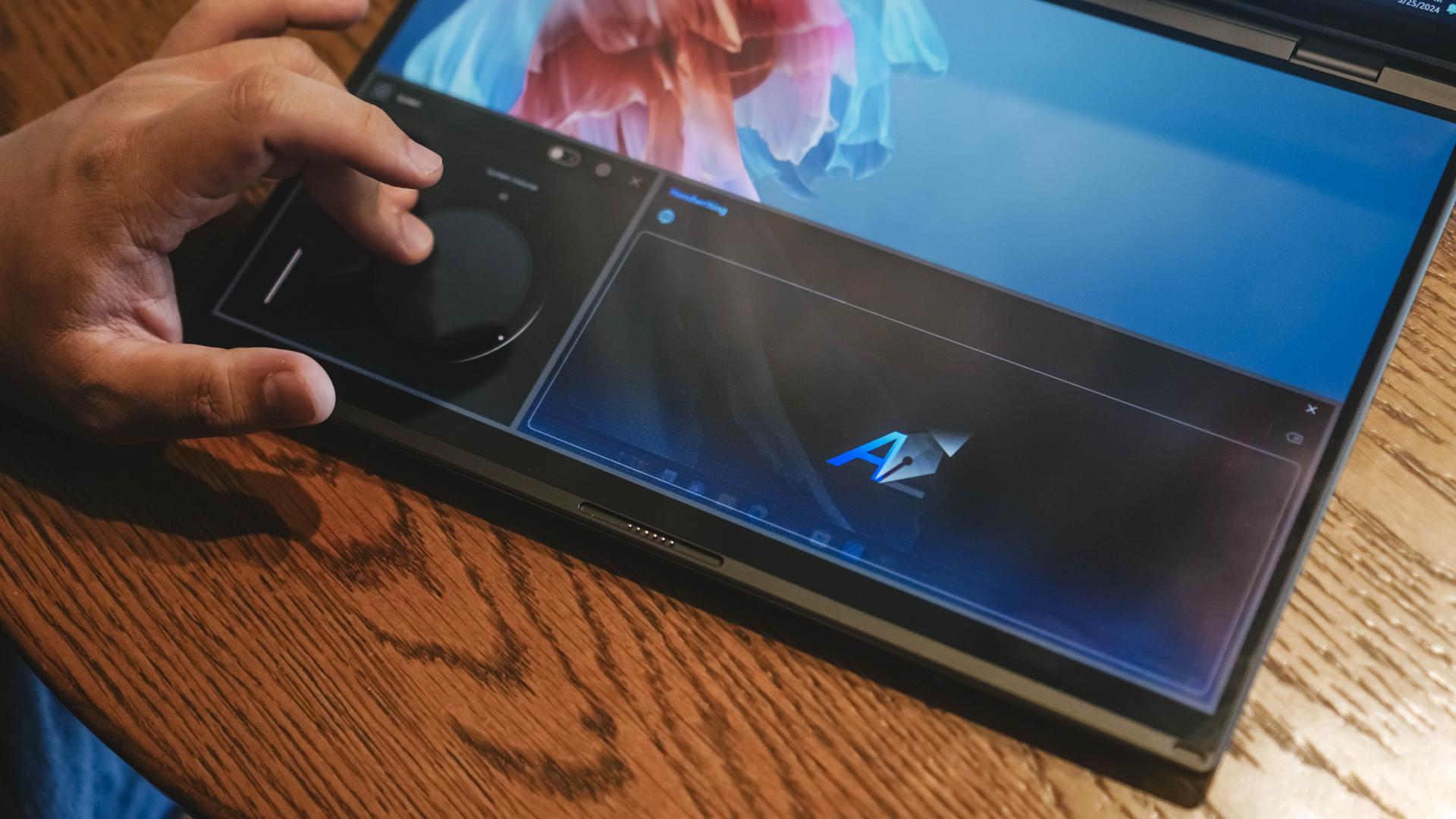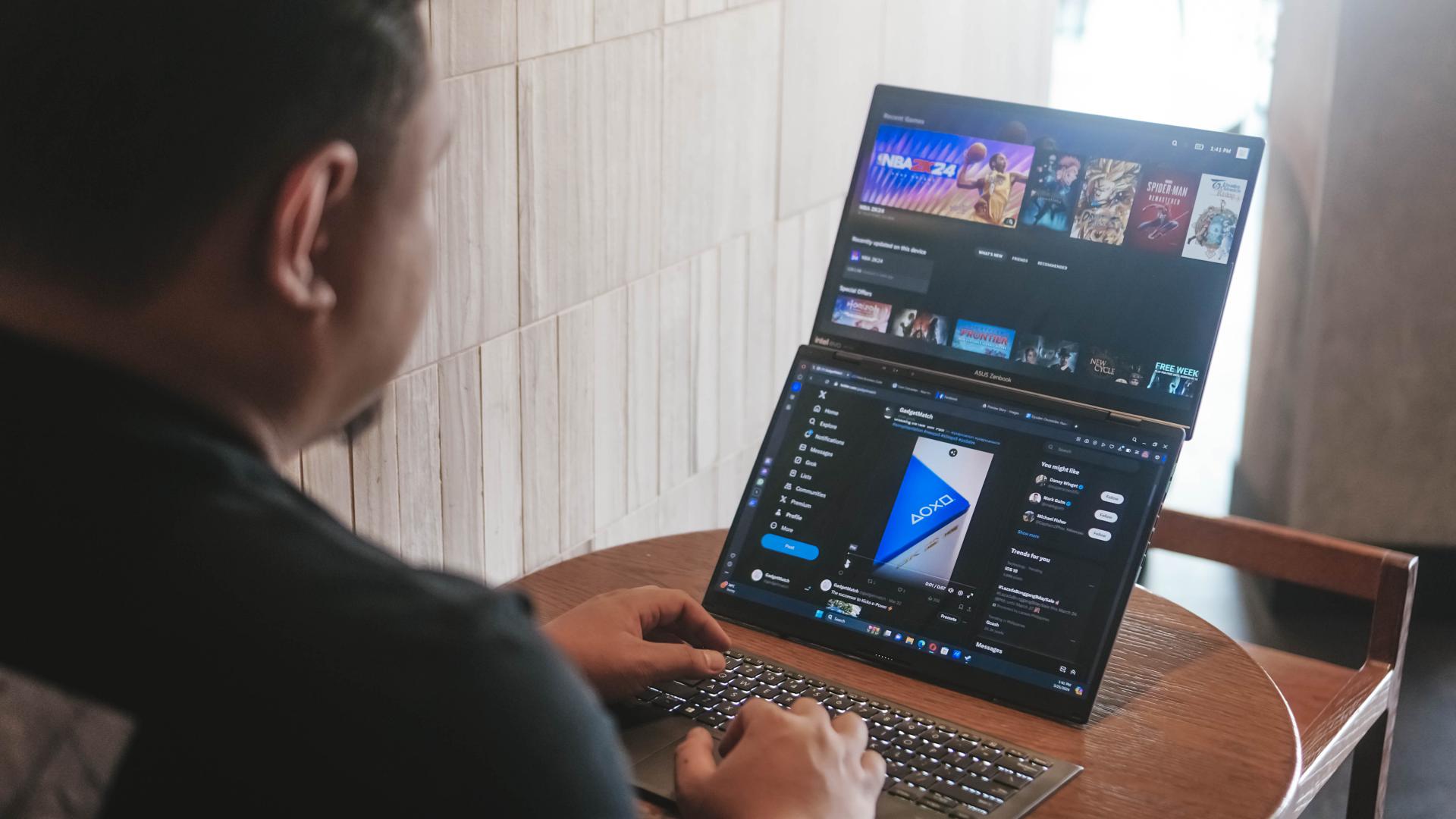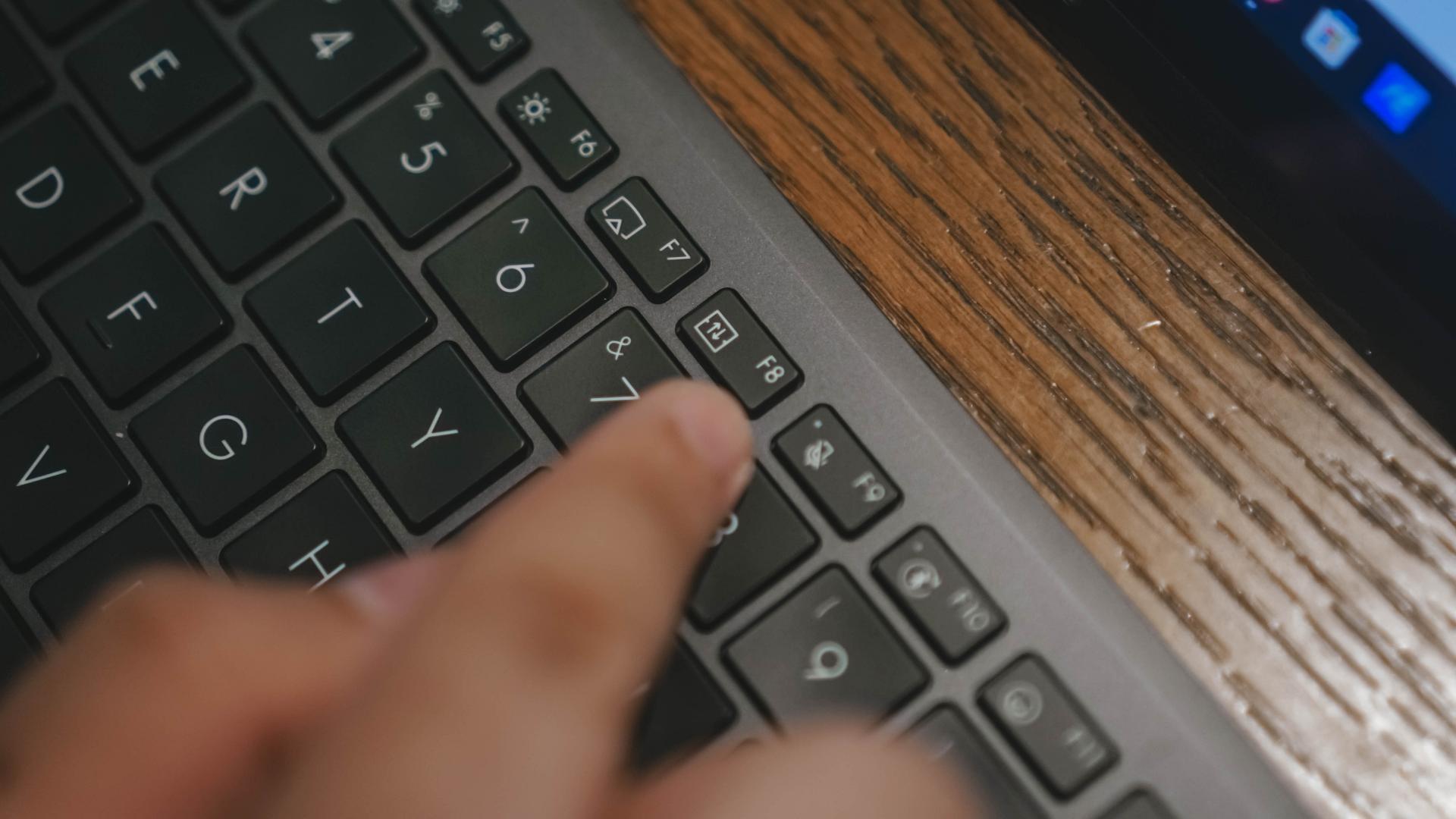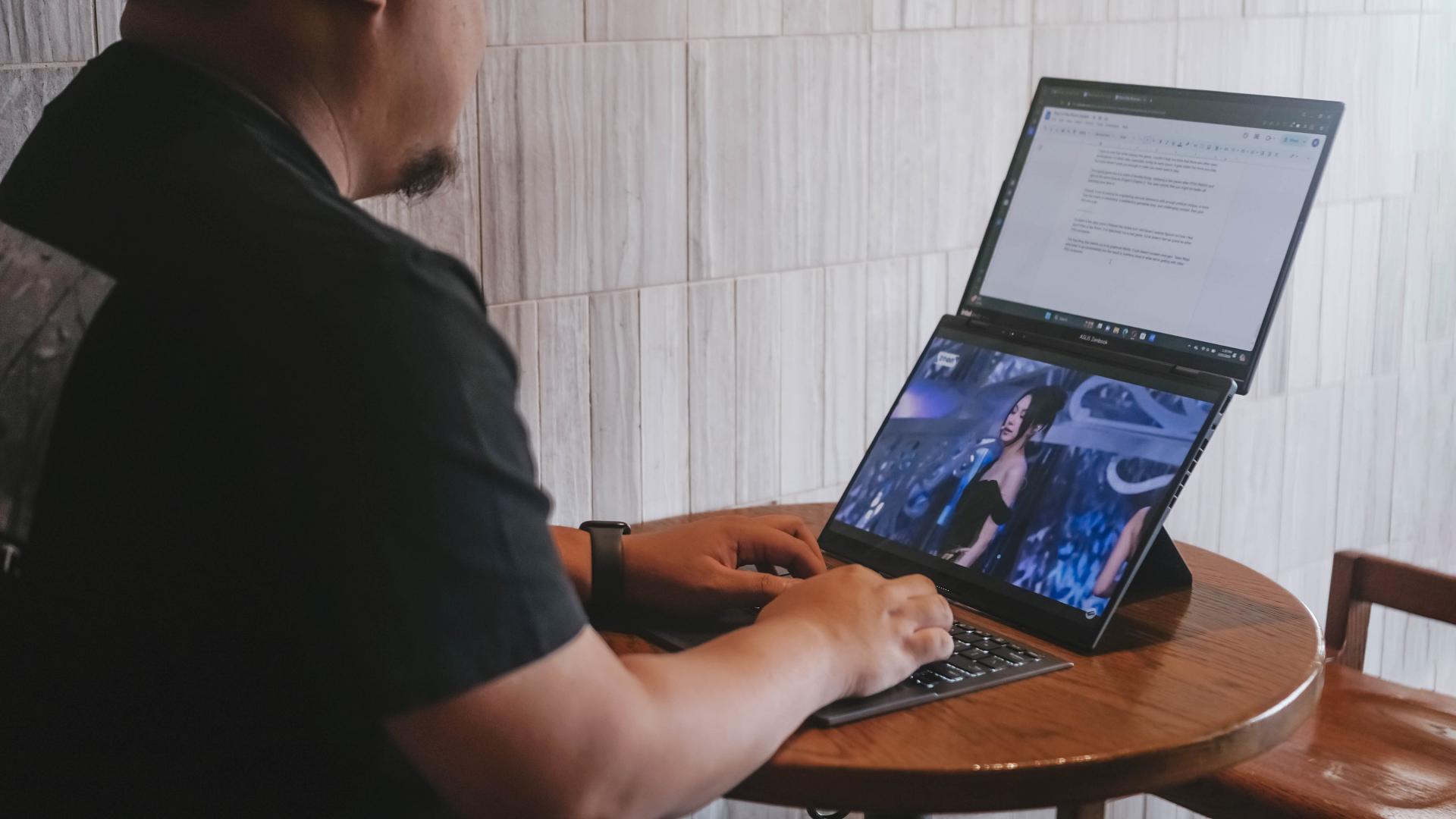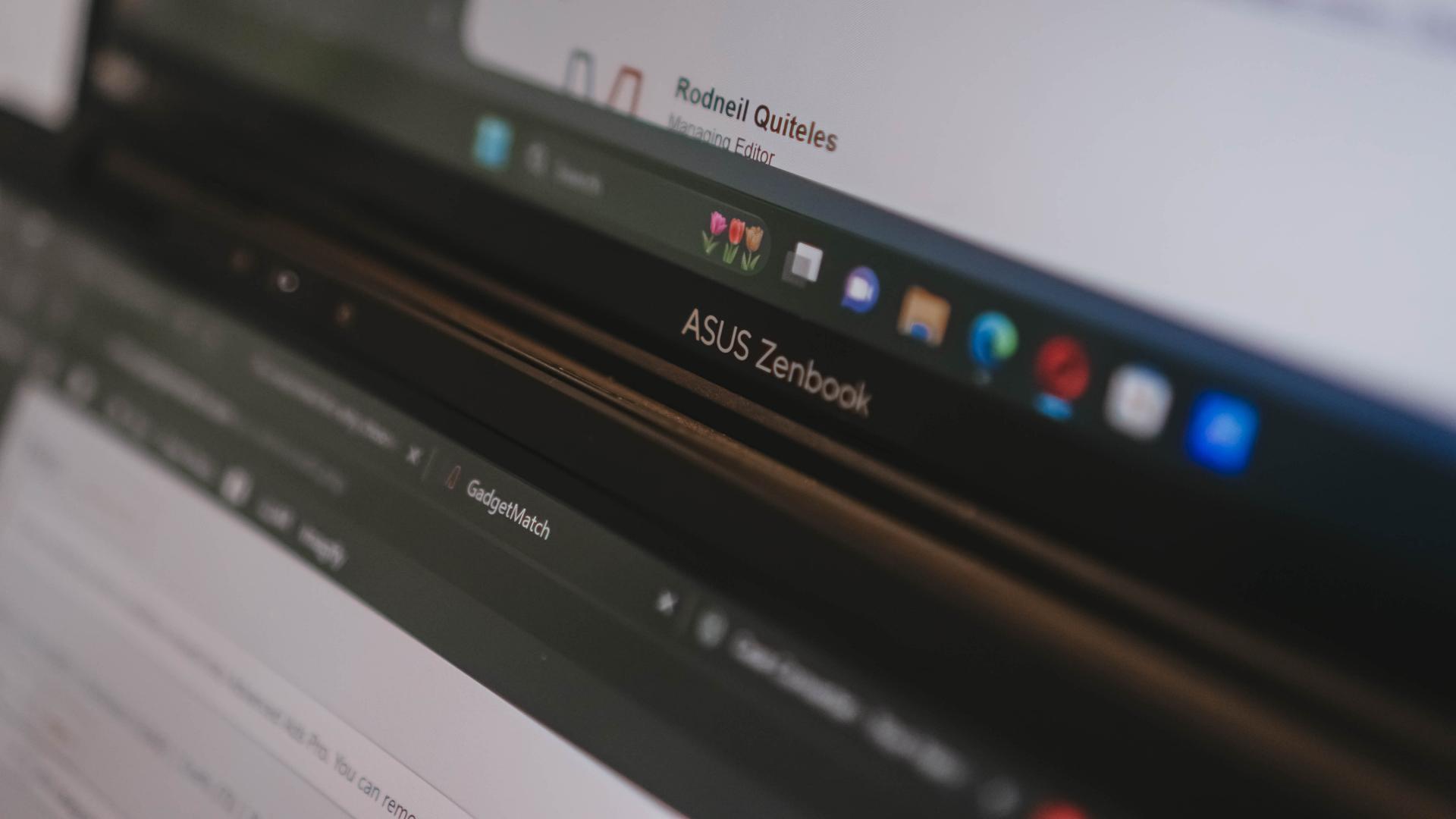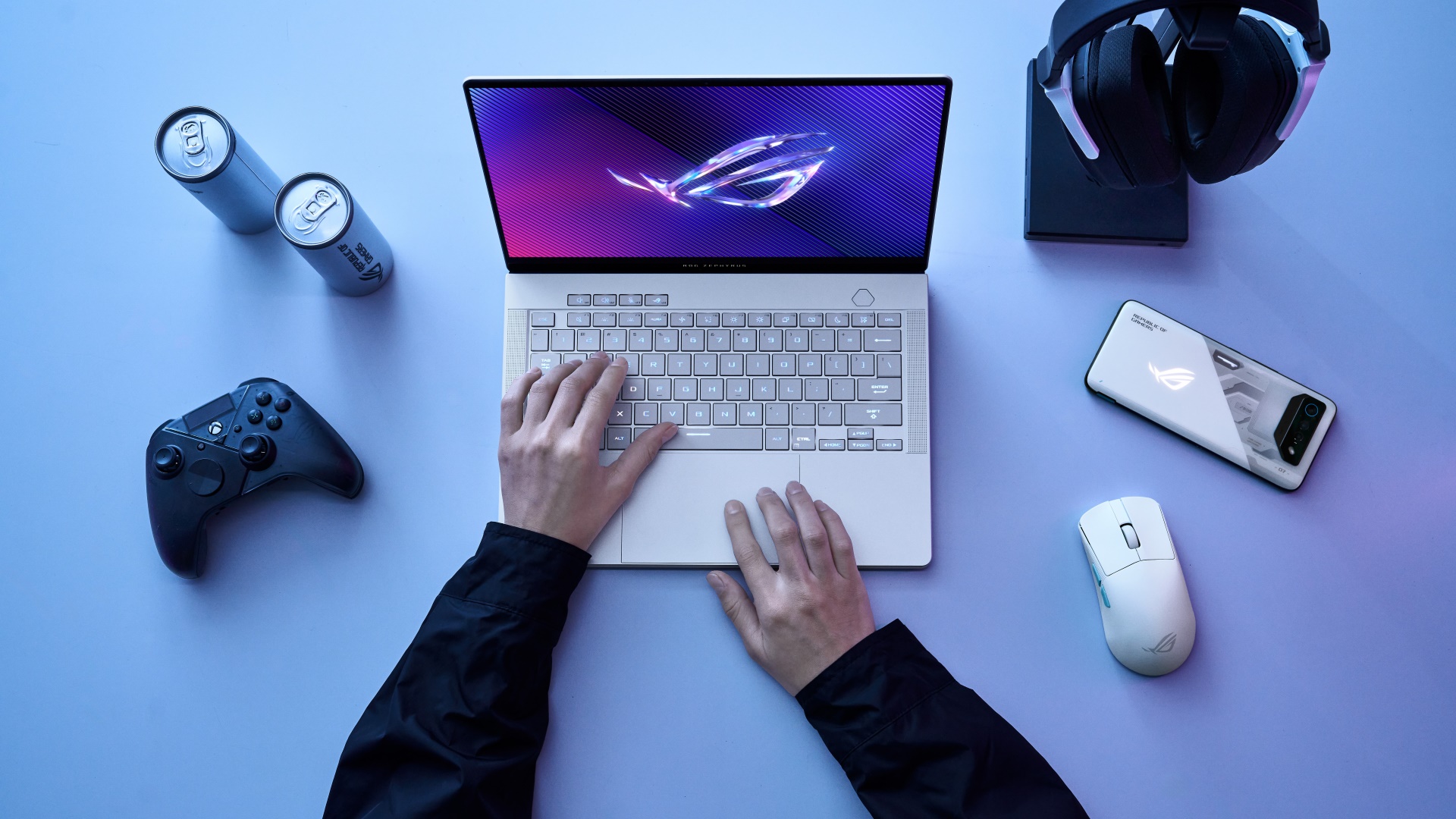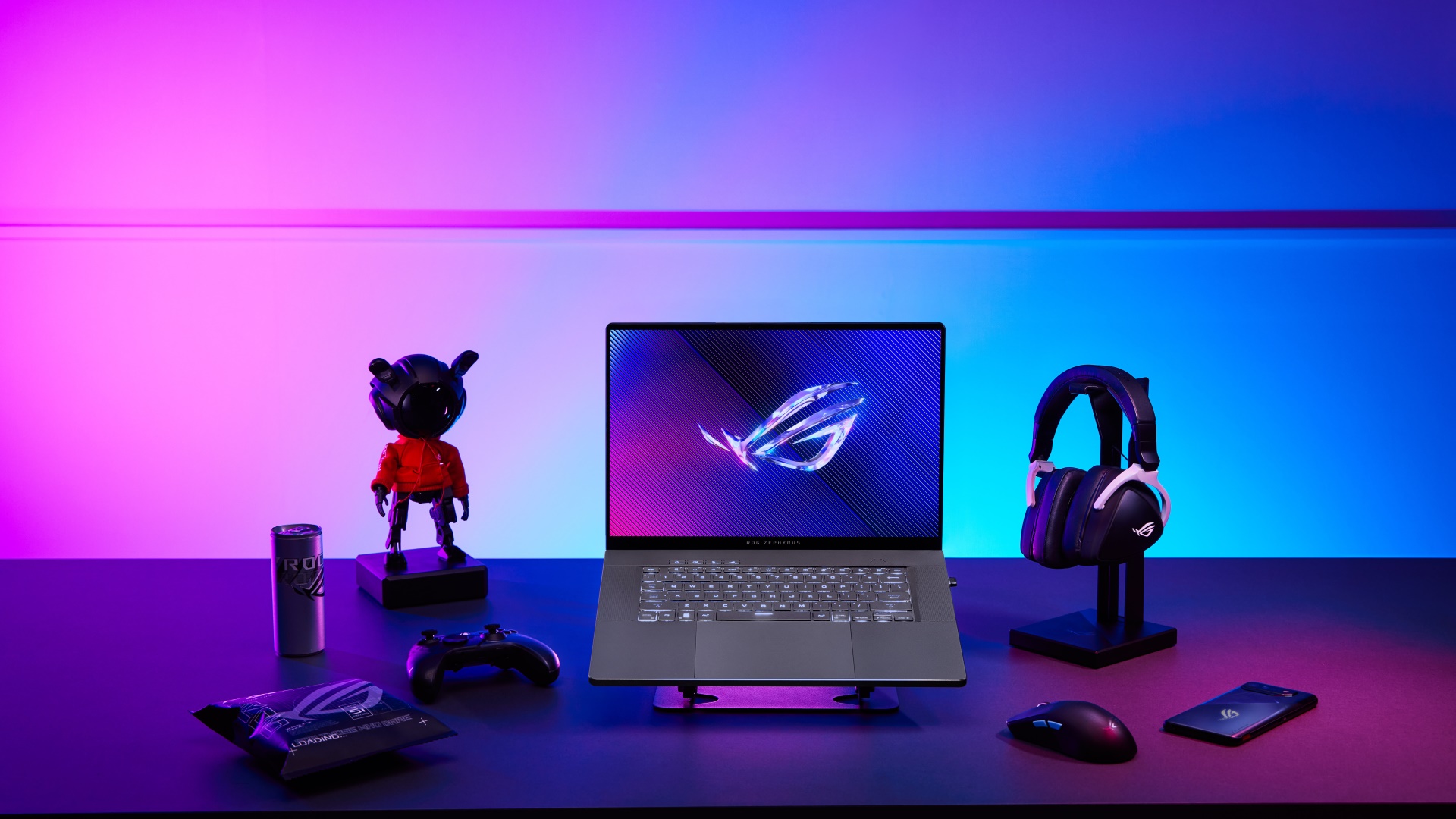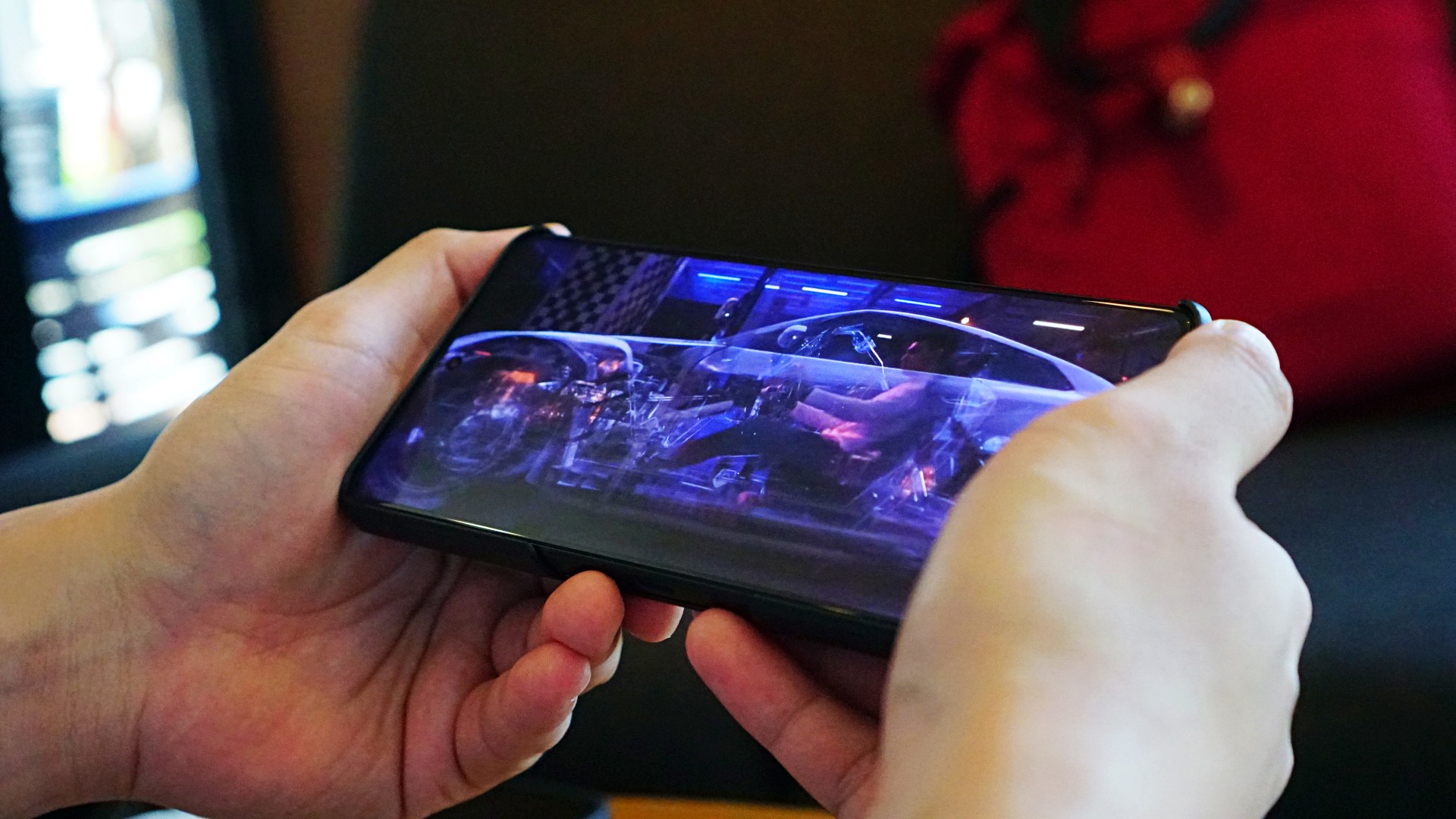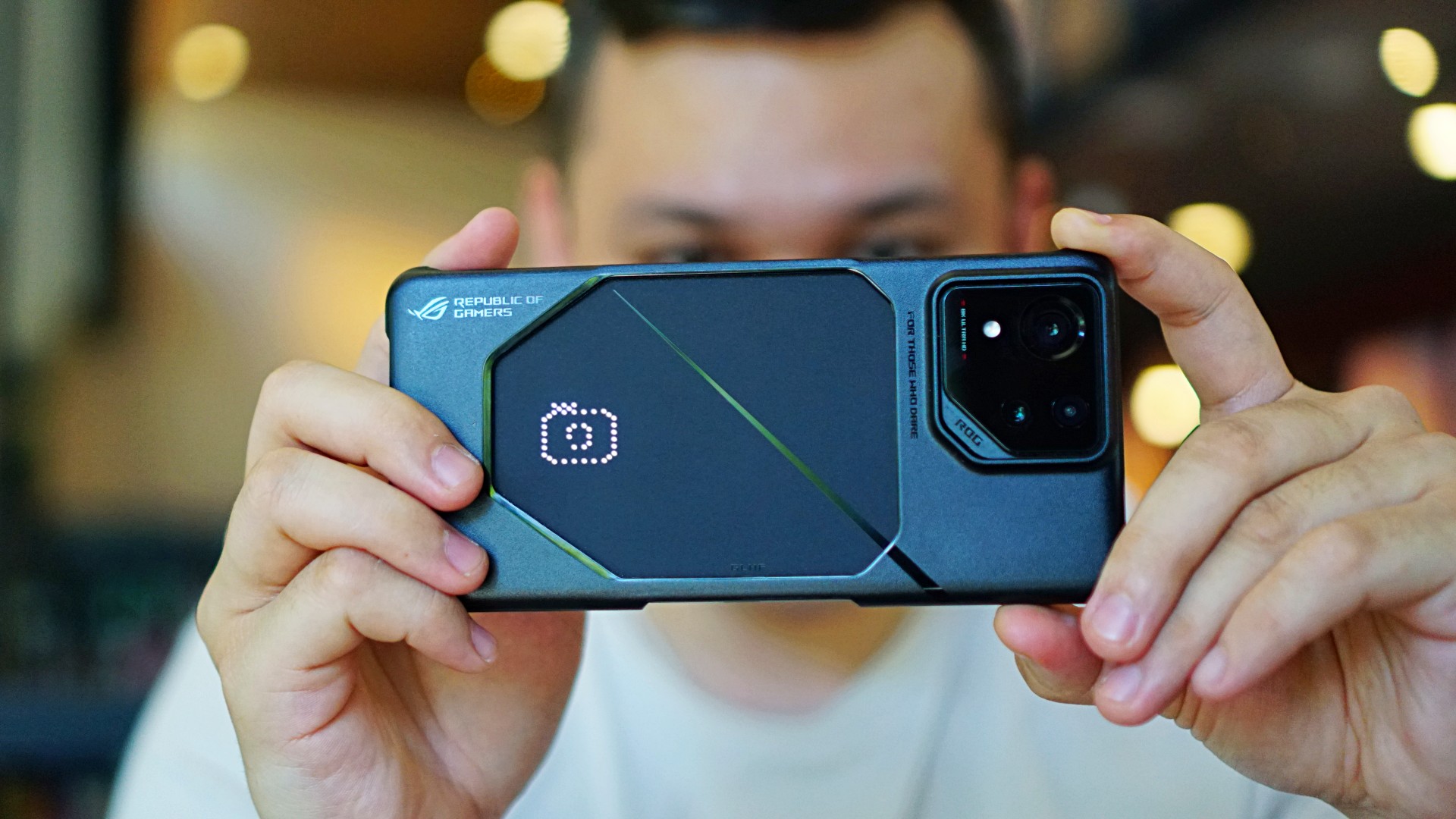

Laptops
Apple 13-inch MacBook Pro (2019) review: Slimmer and evermore dependable
An upgrade that allows you to make time for things that are more important
Editing on a 4-year-old laptop that wasn’t made for that purpose will take a toll not just on the machine itself, but on anyone using it. That’s the situation me and my 2015 13-inch MacBook Pro found ourselves in this year. As with any Mac device, it’s still usable if all you have to do is web browsing, word processing, and maybe some minor photo editing.
Pushing an underpowered notebook to do heavy multimedia tasks will suffice for a while but won’t benefit you nor the laptop in the long run. When you find yourself compromising not just speed but creativity, that’s when you know enough is enough. An upgrade is no longer a luxury but a necessity.
Number talk
For a little bit more context, the 2019 MacBook Pro that I upgraded to is the 13-inch one — stay with me here — with 256GB SSD storage, powered by the 1.4GHz quad-core 8th-generation Intel Core i5 processor. I know that just sounds like a bunch of words and numbers mixed up, but to help you visualize: it’s the second one in the current 13-inch MacBook Pro lineup:
You might be thinking — who would give up a severely underpowered MacBook Pro for yet another Core i5 laptop? I’m well aware there are more much better options, including the last two in the infrographic. If power-hungry tasks like video editing are my only consideration for upgrading, I would have easily gone for the most expensive MacBook Pro. Heck, I would have waited for the cheese grater-looking Mac Pro and set up a workstation at home instead. But aside from performance, portability and price are important to me, too.
Beautiful design in a slimmer body
Laptops are made to be portable. Their very reason for being is to allow the user to get things done despite being away from a power source for extended periods of time. For a girl of average height who carries not just a laptop, but a whole gamut of equipment on a normal work day, the 13-inch MacBook Pro is just the perfect size.
When weighed on its own, the weight difference between the new MacBook Pro and the 2015 model or the 16-inch variant is negligible. When combined with a camera, lenses, tripod, hard drives, at least two smartphones, a bunch of cables, makeup, keys, wallet, and a few documents here and there, it will all feel like a whole day of workout.
The weight Apple shed off by making the new MacBook Pros thinner, no matter how miniscule, matters. As someone who also spent more time at airports than at home for the first half of the year, carrying a slimmer, lighter laptop for the latter half made a lot of difference. Every half pound lost is a half pound off my carry on bag.
I’ve been traveling around Asia and Europe with this thing since September. I’ve carried it with me to cafes, restaurants, airbnbs, hostels, meetings, work events — even to trade shows — and it got the job done without doing damage to my back. I can see myself using the bigger model — eventually, when I’ve managed to exercise my way to a stronger back and upper body.
Not to mention the tall order of finding stylish bags that fit bigger laptops — there’s just not a lot of options for women that not only suits my personal style, but also my budget. I remember using a 15-inch MacBook Pro briefly last year. Having to carry a heavier machine in a utilitarian bag that doesn’t go well with anything bogged me down. It just didn’t let me walk with the same confidence as this more portable laptop in a cute briefcase does. Needless to say, the struggle was real.
Apple took the port out of portable
Whether it’s a smartphone or laptop, making a device less hefty usually means making compromises on things that are essential to the user. Upgrading from the 2015 MacBook Pro meant losing two ports that I use the most when editing videos: the SD card reader and the USB-A port.
There is an easy fix, of course — a dongle — but easy doesn’t come cheap. I’m not gonna lie, having to spend extra on a USB-C dongle to add two ports that used to come free with any laptop purchase does not feel like an upgrade. It’s backwards. I can’t even use any of the accessories that came with my iPhone XS with this laptop — something that iPhone and Mac users used to be able to do with older models.
While I love how thin this laptop is, connecting a dongle to a portable device defeats the purpose of it being, well, portable. It’s not entirely impossible for a laptop to have ports built in and be extra portable at the same time. I’ve seen Windows laptops that are of the same heft, if not thinner, that still managed to include a USB-A port.
Thinner body, better battery
While the lack of ports is a big issue for my workflow, battery life on the new 13-inch MacBook Pro is actually commendable — another thing that normally gets sacrificed when devices become thinner.
It would be unfair to say that the 2019 MacBook Pro lasts longer than the 2015 model. The latter understandably has poorer battery life as it’s been through whatever the equivalent of a world war is when it comes to laptops.
Still, I’m pleased to report that despite losing the extra weight, the 2019 MacBook Pro is so efficient that it lasts me more than a whole work day of writing, managing social media, web browsing, with an hour or two of the Spring Awakening soundtrack in the background.
Whenever I go to the office for our weekly meetings, I find myself never having to take my charger out of my bag. The rest of the team, meanwhile, would take their respective positions beside sockets to plug theirs after just 3-5 hours of use — even when they’re using the newer, high end Windows laptops that they review.
On days when I’m editing, I would normally have to charge the laptop twice as a YouTube video usually takes at least 12 hours to edit. That’s an entire work day of Final Cut Pro X, Adobe Photoshop and After Effects.
Despite my protests against the lack of essential ports on this machine, it needs to be pointed out that the two built in Thunderbolt 3 ports are made equally. This means no matter which port I end up plugging the charger to, it will work as expected. The same goes for external storage devices. This consistency is something you won’t get on other laptops that killed other ports in favor of USB-C.
Charging is also fast — with the bundled 61W adapter, plugging it for 30 minutes charges it from 10% to 42%. It takes just about an hour and 40 minutes to juice up from 10 to 100%, even while I’m writing a full feature article on Notes.
A laptop that can handle video editing, and more
Graphic design, illustration, and video editing are three things I need a laptop for. Other tasks like writing and photo editing I can manage to do on a smartphone, albeit at a slower pace.
Importing even short 1920×1080 clips to FCPX on my older MacBook Pro used to take such a long time, that I can finish reading a news article or browsing latest tweets before the pinwheel disappears. Editing on an underpowered machine didn’t just slow me down — it affected my focus, too.
I remember getting derailed from editing so many times while waiting for clips to render. Then came the time when I couldn’t animate or track even the shortest clips anymore and had to rely on someone else to do it for me. Not being able to execute what I had in mind because my laptop couldn’t handle it was not only frustrating — it was draining.
The 2019 13-inch MacBook Pro surprisingly handles anything I throw at it without hiccups — even when I have three projects on FCPX at the same time, and both Photoshop and After Effects running in the background. That’s something the 2015 model could not handle.
The videos I edit are usually just 1920×1080, but I’ve recently edited a one-minute 4K video and it worked out just fine. FCPX renders fast, exports fast, and doesn’t freeze at the most crucial moments. The bump in power has allowed me to be much more efficient and creative; I’ve been able to experiment without fear of apps crashing or having to wait for things to render.
The infamous keyboard
Another design change that allowed this laptop to be so thin is the controversial Butterfly keyboard. I’ve read and heard of complaints about it from so many people. Frankly, it was one of the things I was worried about having encountered that problem on a 2017 model in August.
A reliable keyboard is not just for writing; I use the keys for shortcuts on Photoshop and FCPX as well. Thankfully, I haven’t run into the same problems that plagued 2018 models and older. Any typos made with this thing has nothing but human error to blame. As far as the shorter travel that irks a lot of nitpickers, it’s something that I easily got used to once muscle memory kicked in.
The function keys on the newer MacBook Pro models are also gone. Replacing them is yet another controversial design decision: the Touch Bar. The only time I used any of the function keys was whenever I needed to adjust volume or brightness. I don’t feel like I’m missing out now that they’re gone as I can still do those on the narrow secondary screen that replaced the physical keys.
The Touch Bar still has a long way to go when it comes to functionality. Even when I’m editing videos, I default to keyboard shortcuts instead of the convenient keys that appear on it when I’m on FCPX. Strangely, I find it most useful when I’m on social media duty as suggested emoji are one tap away, eliminating the need to Google them one by one.
The physical power key is also gone — replacing it is a glass button that also doubles as a Touch ID sensor. It’s a tiny life-changing hardware change that I didn’t know I needed. Logging in with just a tap of a finger is not only so much faster, it’s also more secure.
What’s essential is visible to the naked eye
The 13-inch MacBook Pro gives 4K displays on other high-end laptops a run for their money. What Apple proves, time and again, with every piece of hardware they make is that it’s the quality of pixels that matter, and not the number.
Mac displays’ color accuracy has always been unmatched, and the same can be said about this device. The last thing I want is to oversaturate video footage or photos because my laptop display is too dull — a problem I haven’t had since switching to Mac.
While some people would prefer to turn off True Tone when editing photos and videos for better color accuracy, I keep it perpetually turned on. True Tone is designed to make whites easier on the eyes. It adjusts automatically depending on the ambient light.
The display is also bright enough that the only time I crank it up to full brightness is whenever I’m working outdoors — under direct sunlight — which rarely happens anyway. Indoors it stays at around 30-50%, and only 10% at night when I’m winding down before sleep.
Of course, a great display translates to a great Netflix and chill experience. I’m no display expert, but even the gloomiest episodes of The Crown registers as accurately as a colorful animated movie like Frozen. I’m also no audio expert, but the speakers are more than loud enough for my needs.
My only complaint about the display is how easily it picks up grime and fingerprint smudges. It’s not a deal breaker; it’s just the only thing that’s not aesthetically pleasing in an otherwise beautifully designed notebook.
Is this your GadgetMatch?
It’s such a relief when you can just do what you need to do without waiting or worrying. Even when things need to be rushed or they happen at the last minute, I know I can deliver because the 2019 13-inch MacBook Pro can. It’s that capable and reliable.
As a Mac user what I appreciate the most about this upgrade is the same thing nitpickers hate about it — its familiarity. The changes between this and the 2015 model are significant enough, but all done in a similar form factor. The slimmer body and its more efficient internals make it feel like what I’m using is new, without having to deal with a learning curve that usually comes with any hardware upgrade.
If you are using a 2015 MacBook Pro or older, and have noticed that it’s slowed you down, consider upgrading to the 2019 MacBook Pro. If you prefer the 13-inch model like me and have an extra SG$ 700 to spend, go all the way and get the maxed out model. You’ll benefit from better speeds, graphics, and more storage. If what you do requires more power, Apple just announced the new 16-inch model that we will also be reviewing shortly.
When life requires you to be on the go, there’s no better machine to help you accomplish your tasks than the 2019 13-inch MacBook Pro. It’s thin, light, and narrow enough to be taken and used anywhere — even on an economy class flight’s tray table — yet powerful enough to execute your creative vision and help you get the job done.
What you’re buying when you get the 13-inch MacBook Pro is not just a new laptop; you’re investing in peace of mind, time, and other resources for matters that are more important. Little by little, it’s created space in my life for more ideas, hobbies, self-care, even in-person interactions, that used to be occupied by waiting for clips to render or images to resize. When you have a tool that’s this dependable, you get to do things you never thought you could do again.


The ASUS Zenbook Duo 2024 came into my life at such a weird time. Over the past few months, I have been actively trying to build a workflow that’s not reliant on having to bring a laptop all the time. Yet, here comes ASUS’ latest and possibly best dual screen laptop yet, opening up possibilities I personally never even imagined.
Here’s my time so far with the ASUS Zenbook Duo 2024.
Multiple modes
The multiple modes available to you with this unique form factor have been well documented. But here’s a quick recap.
Naturally, there’s Laptop Mode. If you don’t care for extra attention when you’re out and about while working, this is likely the mode you’ll stick with most of the time. Due to its nature, this is also the mode where you’ll be able to squeeze out more usage from the device because the other screen is not in use. More on that later.
There’s Dual Screen Mode. Next to Laptop Mode, this is the orientation I use the most, especially when I’m able to plug the device. So, at home, this is mostly how I used the Zenbook DUO 2024. I’m starting to get so used to this mode that when I do work on the regular Laptop Mode, something feels lacking.
Lastly, there’s Desktop Mode. It’s essentially just like Dual Screen Mode but with the Dual Screen in portrait orientation. I’ve never used this to work and only really went to this orientation to showcase it.
A key thing that makes all of these possible is the underrated inclusion of a kickstand. It feels like a natural part of the whole contraption that it’s mostly just a passing mention in most discussions about the Zenbook DUO 2024. But I think it’s a big part of what makes all of it work seamlessly.
There isn’t a name for it but you can also lay the laptop flat on the table fully spread. It’s great when you’re trying to present something to someone across the table. Also feels like more apps can get some sort of use-case for it if the form factor ends up being popular.
Other knick knacks
ASUS also made sure to make this as usable as possible even if, for whatever reason, you misplace the bluetooth keyboard.
You can tap the bottom screen with six fingers to pull-up a Virtual Keyboard. It’ll never feel as good as a physical keyboard, but it’s there in case you happen to need it.
Swipe down with six fingers and you’ll get the Easy-access tools. Here you’ll have handy things like handwriting input, the control panel, as well as the number key and quick key.
Lastly, you can tap the screen with three fingers to get the Virtual touchpad. This layout is reminiscent of the earlier Zenbook Duo designs.
Does anyone ‘need’ this?
They say necessity is the mother of invention, so what was the thing that necessitated the creation of this dual screen laptop?
Personally, I think more screen real estate is always a boon. And over the years, more and more people have squeezed out plenty of usage out of multi-monitor desktop setups. What ASUS did here is they took that concept and made it more mobile.
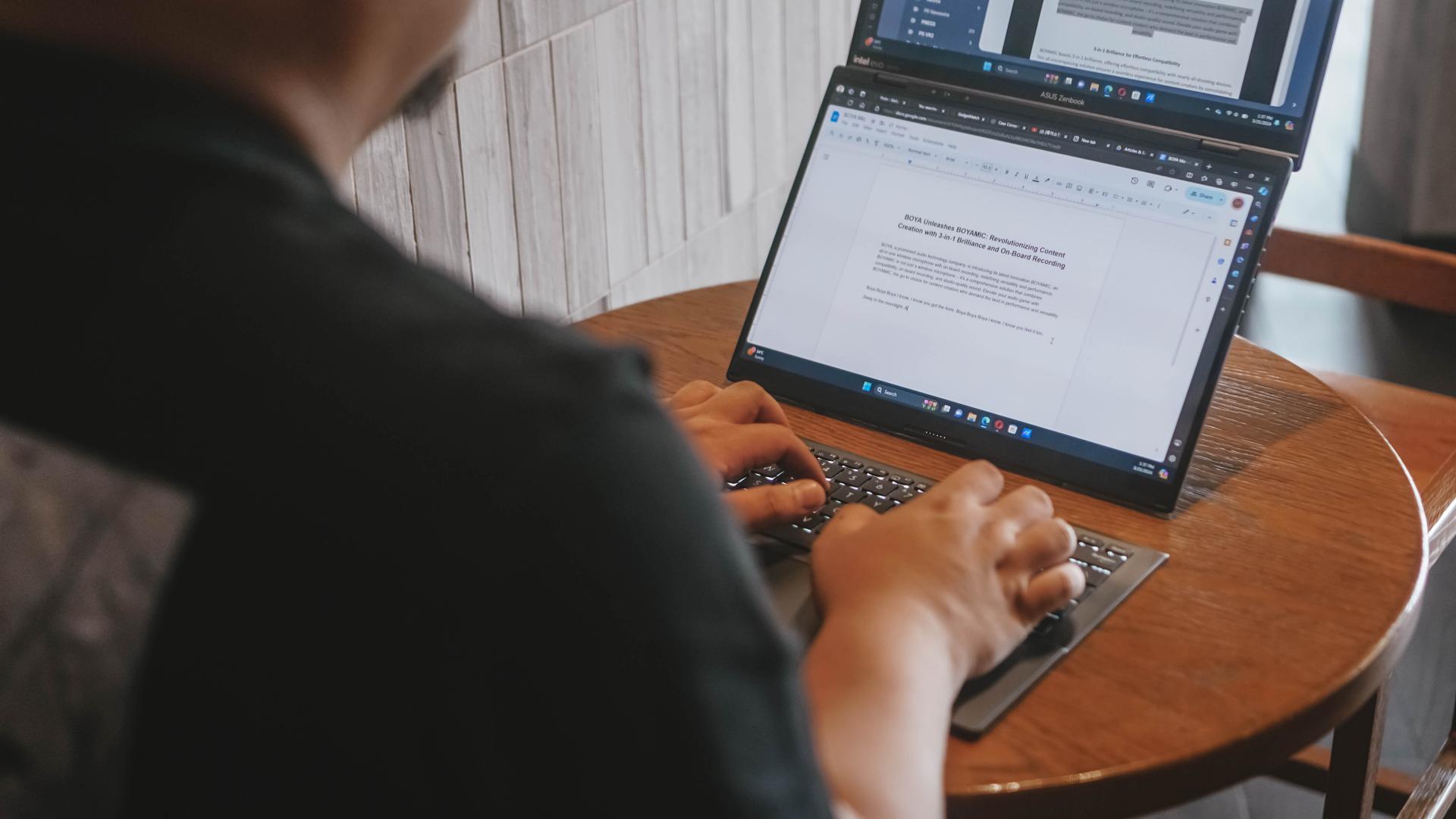
For me specifically, I’ve used it to run two browsers side-by-side. One for the material I need to reference, the other for the Google Doc that I stare blankly at as I try to cobble words together to make sense of things.
It’s also great for video editing. You can have one entire screen to be the preview area and reserve the other for your timeline and work area. It’s so much easier than having to preview your video on 25% or less of a regular screen.
In these particular instances, productivity is most definitely enhanced. It saves time because you no longer have to press alt+tab as much to switch apps. And it’s easier than ever to glance at multiple apps at once.
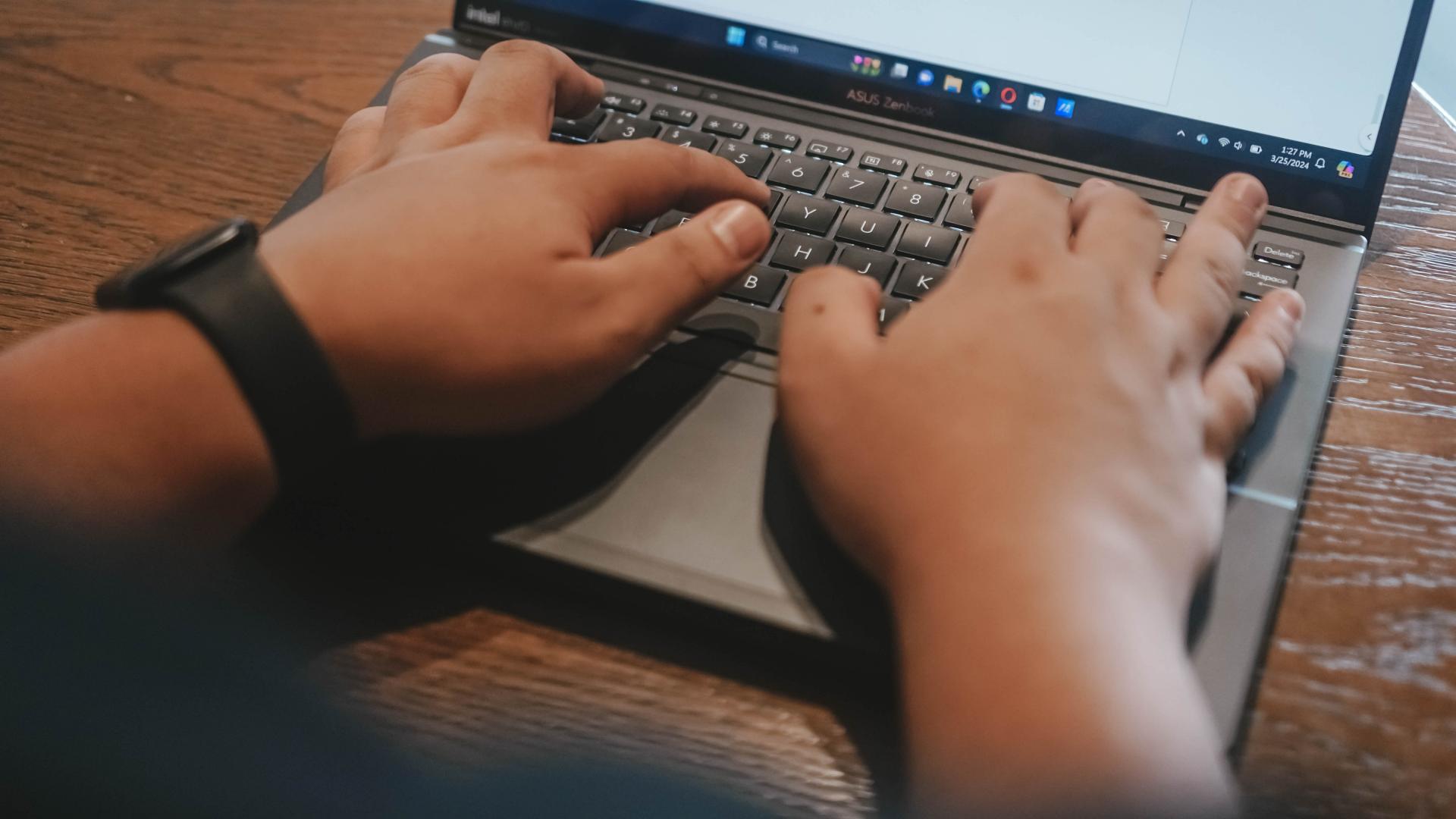
Part of my work is also communicating on multiple chat apps. There’s Slack, Messenger, Telegram, WhatsApp, and Viber. Different sets of folks prefer different apps. It can be cumbersome but it’s something I’ve gotten used to. Having Dual Screens as well as the ability to split view apps in these screens has been a godsend. It’s now easier and faster to see which apps have a pending message I need to attend to.
And you can just as easily switch what’s on each screen with a single tap of this button on the F8 key.
It didn’t exactly feel like it while I was using the Zenbook DUO 2024, but as I now sit and ponder on how I’ve used it over the past couple of weeks, I definitely see how it’s helped me get some things done faster even if it’s just by a small percentage.
It’s also great to just have a video running on either screen while you work on the other.
Lastly, there’s this little quality of life thing where my primary screen is now near eye-level even if I’m not using a separate monitor. It’s great for one’s posture. I just have to find a better work chair now.
A Dual Screen believer
Over the past year, I have fancied myself a foldable enthusiast. On the daily I switch between the OPPO Find N3 and the HONOR Magic V2. Something about having more screen real estate flips a productivity switch in my brain.
I can’t say the Zenbook DUO 2024 has had the exact same effect, but it’s definitely in the same neighborhood. The additional screen has unlocked possibilities that at this point, I would say are still just “nice-to-have.” I can certainly still go back to a regular laptop and not miss a beat. When it comes to smartphones, I think my personal preference now is totally the foldable kind. I’m not there yet when it comes to laptops.
That said, this form-factor definitely has merit. Even Lenovo has something similar with the Yoga 9i. That alone will show you that there might just be enough demand for this kind of laptop.
Dual drawbacks
There are two things, though, that don’t make this an absolute slam dunk for me. That’s Microsoft Windows and the battery life.
For context, I’ve been using a 2020 13-inch MacBook Pro M1 for the better part of the last four years. And prior to that, I’ve used a MacBook Pro for most of my time as a media professional. When it comes to software fluidity and battery life, I have been spoiled.
To me, Windows just isn’t as fluid and does not feel as seamless as MacOS. Don’t get me wrong, it has certainly come a long way. I get by now with the same gestures using only the trackpad. There was a time when Windows trackpads just weren’t usable for me.
Don’t get me wrong, I am fully aware of the advantages of Windows and how much more control you can have over it if you’re the type to really dig down in the settings. But that’s not me. I do not have the luxury of time to be doing so much tweaking.
And while the Windows vs MacOS thing is debatable and largely boils down to preference, the same isn’t true for battery life. With my 13” MacBook Pro M1, I feel confident going out and not having to plug it for an entire day. I know I’ll have enough juice left for an entire heavy work day and then some.
That just isn’t true for the ASUS Zenbook DUO 2024. Especially since I prefer using it in Dual Screen mode. That means I am limited to around 3.5 to 4 hours in this specific mode because the screens consume more power and the bluetooth keyboard can only last that long.
These aren’t absolute deal breakers, but they are things you definitely should consider if you’re thinking about getting this dual screen machine. You best know all the spots with an electricity outlet or at least have a heavy duty power bank on hand to keep things running all day.
Is the ASUS Zenbook DUO 2024 your GadgetMatch?
All things considered, the ASUS Zenbook DUO 2024 is a fantastic machine. After two weeks, I haven’t even tapped into its full potential yet, but the improvements in my work efficiency are noteworthy.
At PhP 129,995, it does command a hefty price tag. Whether or not the benefits are worth it will ultimately come down to how you plan to incorporate its dual screens to your workflow. If you see yourself needing to work on dual screens while you’re on the go, this is about as good as it gets.
Everything equipped in this machine is top-of-the-line: Intel Core Ultra 7 155-H, 32GB of LPDDR5x RAM, 1TB of PCIe 4.0 NVMe M.2 SSD storage, and more. You also get a healthy number of ports: 2x Thunderbolt, 1x USB 3.2 Type-A, 1x full-size HDMI 2.1, 1x audio combo jack.
There’s more than enough power here to fuel most workflows. And you get all of that with twice the number of screens. I wouldn’t jump in blindly, but if the ASUS Zenbook DUO 2024 is something you fancy, you’ll definitely feel special once you have it on hand.
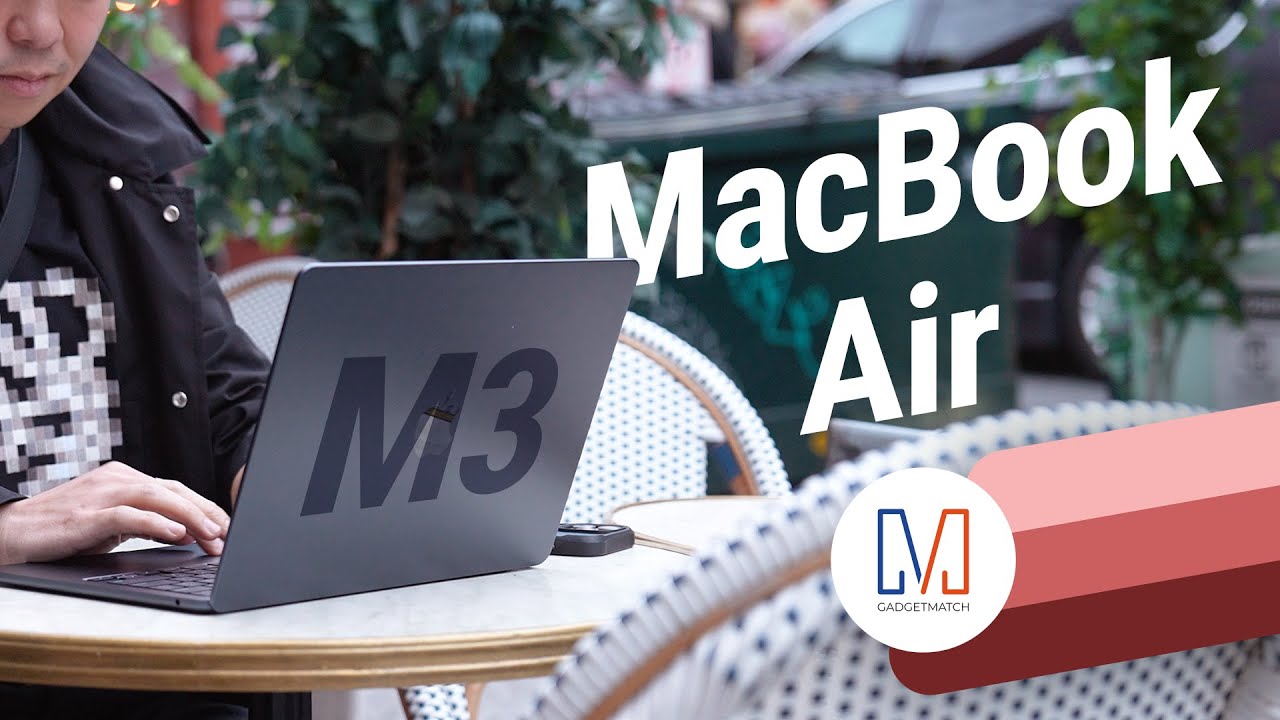
Everyone’s favorite MacBook just got an update!
It’s more powerful, faster in many ways, and it’s even better at AI.
But should you go rushing out to buy one?
Here’s our Apple M3 MacBook Air review.
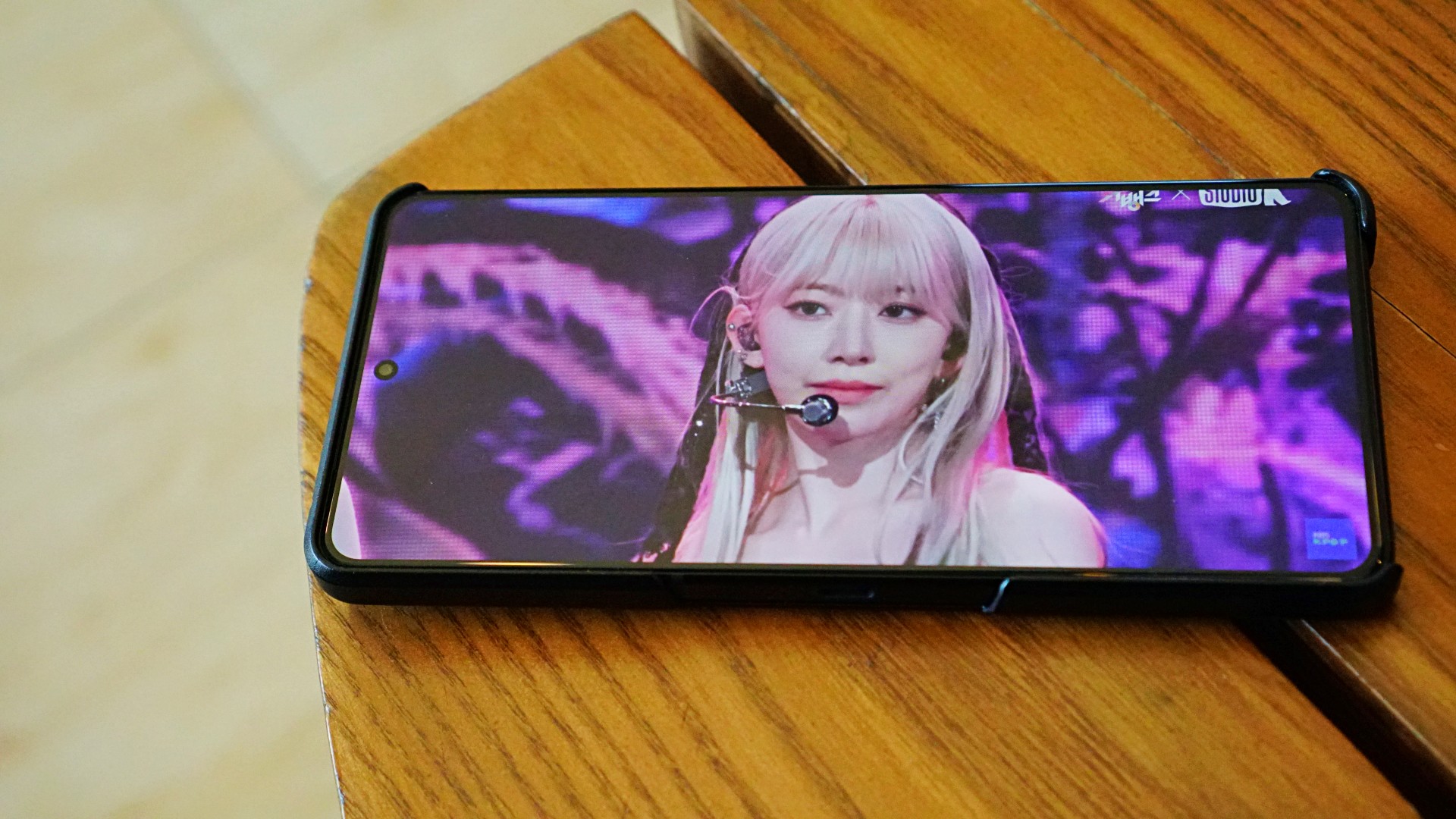
The Philippine local pricing and availability details for the 2024 ROG Zephyrus G series and new ROG Phone 8 series have been announced.
The new ROG Zephyrus G laptops are available at ASUS, ROG, and multi-brand stores, as well as the ROG Shopee and ASUS Lazada stores. On the other hand, the new ROG Phone 8 series are available only on physical stores nationwide.
ROG Zephyrus G series 2024
The new ROG Zephyrus G14 and G16 laptops were first announced at CES 2024, with redesigns for a sleeker form factor. The devices also use OLED displays, instead of Mini LED.
The fan favorites are available starting this March in the following variants:
- Zephyrus G14 (32GB+1TB, RTX 4060): PhP 129,995
- Zephyrus G14 (32GB+1TB, RTX 4070): PhP 159,995
- Zephyrus G16 (32GB+1TB, RTX 4070): PhP 179,995
- Zephyrus G16 (32GB+1TB, RTX 4080): PhP 249,995
The 2024 Zephyrus G14 and G16 both have a brand-new design, boasting of a lightweight and all-aluminum chassis. The models are sleeker and come with edge-to-edge keyboards with larger keycaps, and bigger and louder speakers.
More than the appearance, these new laptops feature power processors to support gaming and creative workloads. The latest Zephyrus G14 is equipped with AMD Ryzen 8000 processors and AMD Ryzen AI support. The Zephyrus G16, on the other hand, features up to an Intel Core Ultra 9 processor 185H.
The laptops support up to an NVIDIA GeForce RTX 4080 GPU with advanced features such as DLSS 3.5, Frame Generation, and Ray Reconstruction.
Moreover, the G14 models are compatible with Windows Studio Effects, offering users tools like automatic framing, eye-contact correction, and advanced background effects during video calls.
The G16 series also has dedicated AI support for tools like Omniverse and Stable diffusion. With access to AI-accelerated technologies, the laptops’ hardware effortlessly handles the most demanding creation software and games alike.
For the first time, the new Zephyrus G devices come with OLED panels with ROG Nebula Display. The G14 offers 3K 120Hz, while the G16 boasts 2.5K 240Hz displays. These screens also feature a 16:10 aspect ratio, VESA DisplayHDR True Black 500, and 100% DCI-P3 color space.
Gamers will benefit from up to 0.2ms GTG response time. moreover, the panels come with NVIDIA G-SYNC support.
ROG Phone 8 series
The ROG Phone 8 series is available starting this March in the following variants:
- ROG Phone 8 (12GB+256GB): PhP 50,995
- ROG Phone 8 Pro (16GB+512GB): PhP 60,995
- ROG Phone 8 Pro (24GB+1TB): PhP 75,995
The ROG Phone 8 series introduces four gaming-friendly AI features to take the experience to the next level. Background Mode allows gamers to switch a game to the background. X Capture, on the other hand, lets them capture important moments easily. AI Grabber, meanwhile, helps with text capture. Wrapping up the features is X Sense 2.0, which assists users during gameplay.
Under the hood, both gaming powerhouses run on the Snapdragon 8 Gen 3 mobile platform. This is complemented by a special Rapid-Cooling Conductor design that draws heat away from the processor. Moreover, the AeroActive Cooler X clip-on accessory has been made smaller and more efficient at reducing the phone’s temperature.
The ROG Phone 8 Pro in particular comes with a 6.8-inch flexible AMOLED screen. It uses LTPO technology for adaptive refresh rates from 1 to 120Hz, and has up to 165Hz for gaming. It also has an increased brightness of 2,500nits.
Furthermore, the gaming phones come with an advanced tri-camera system. The main cameras use the latest 50MP Sony image sensor. These cameras support anti-shake EIS and an upgraded OIS for smoother videos and shake-free photos.
For the first time, the series includes a 3X telephoto lens with built-in OIS. With ASUS HyperClarity technology, users can preserve detail at up to 30X zoom on photos and up to 10X zoom on videos. Completing the setup is a 13MP ultrawide camera that uses cutting-edge algorithms to reduce distortion. In front is a 32MP selfie camera with an upgraded field of view of 90 degrees.
For personalization, the Phone 8 has a customizable Aura RGB Lighting while the Phone 8 Pro has an Anime Vision Mini-LED display.
Availability, early bird offers
As part of the products’ early bird promotion, the ROG Phone 8 and ROG Phone 8 Pro (16GB+512GB) come with a free AeroActive Cooler X worth PhP 4,995.
The higher end ROG Phone 8 Pro variant (24GB+1TB) is bundled with an ROG Cetra True Wireless gaming earphones worth PhP 4,510.
On the other hand, the ROG Zephyrus G series 2024 include a complimentary three-month Xbox Game Pass subscription. Depending on the model they purchase, customers may also get the following freebies:
- ROG Impact Gaming Mouse
- ROG Backpack
- ROG 16-inch sleeve
- Type-C PD Adapter
-

 Accessories2 weeks ago
Accessories2 weeks agoApple Vision Pro Review: Two Months Later
-

 Features4 days ago
Features4 days agoFortify your home office or business setup with these devices
-

 Gaming1 week ago
Gaming1 week agoThe Rogue Prince of Persia looks like an ultra-colorful roguelite
-

 Philippines2 weeks ago
Philippines2 weeks agovivo Y100 to release in Philippines on April 27
-

 Deals2 weeks ago
Deals2 weeks agoSamsung Awesome April: Deals on Galaxy A series
-

 Gaming1 week ago
Gaming1 week agoStar Wars Outlaws release date revealed
-

 Accessories7 days ago
Accessories7 days agoLogitech unveils G Pro X 60 gaming keyboard: Price, details
-

 Deals7 days ago
Deals7 days agoTCL P635 TV: Big savings for TCL’s anniversary

